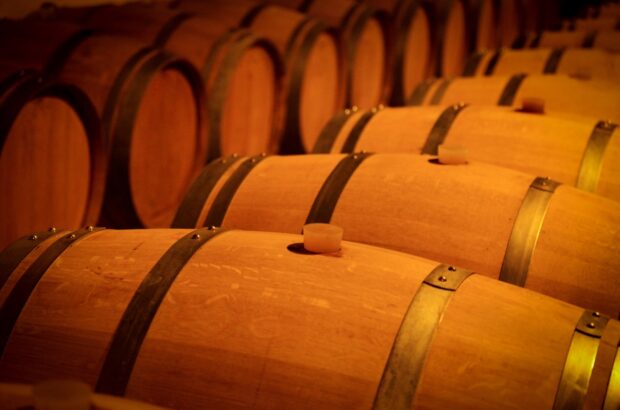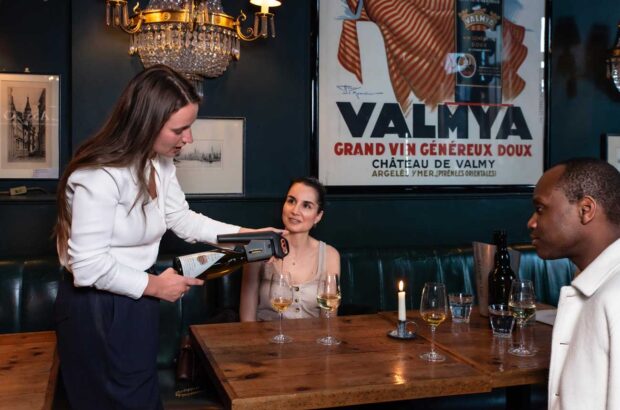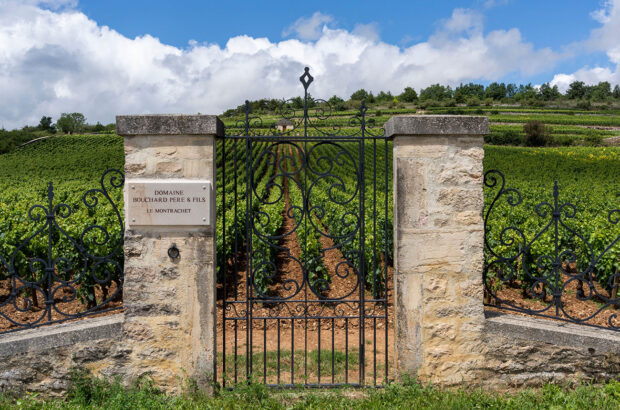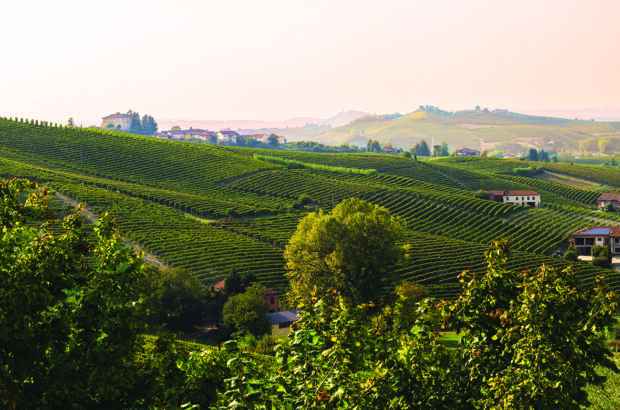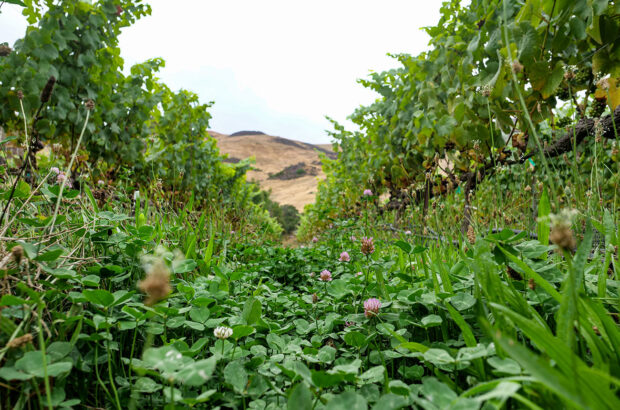If wine is the new rock and roll, André van Rensberg, winemaker at Vergelegen in Stellenbosch, makes an unlikely pin-up. Bespectacled, distracted, always dressed in wine-stained T-shirt and shorts, he lumbers into view at otherwise smart evening events, grunts a perfunctory hello and bangs a few barrel samples down on the table. The first time I met him was at a tutored tasting, where he described one of his own Chardonnays as ‘going through a phase where it’s like a big-breasted girl – all on top with nothing else to say for itself’. Hmmm. If he were in a band, he’d be the unruly, wild drummer, not the charming frontman.
His character wouldn’t be out of place in South Australia, but in the still somewhat genteel world of the Cape winelands, meeting van Rensberg can come as a bit of a shock. In fact, he is exactly what’s needed in a region which has stood on ceremony for too long. Despite being a show estate owned by the huge operation Anglo-American Farms, you don’t get corporate videos and perfumed press packs at Vergelegen – you get André, and an awful lot of colourful language.
An interview with André van Rensburg
Vergelegen
And of course, there’s another refreshing aspect to a visit to Vergelegen, where van Rensberg is winemaker – the consistently high quality of the wines. The whites are remarkably impressive, and have been causing a stir in the UK for a couple of years now – partly because they come at such a fair price. Despite his graceless appearance, van Rensberg crafts finely tuned, intensely flavoured Sauvignon Blanc, possibly the best in the Cape. Indeed, he has been described as a ‘genius’ with Sauvignon by winemaker Guy Webber, who is now holding the reins at van Rensberg’s old stamping ground, Stellenzicht. He makes wonderfully complex, beautifully well-balanced Chardonnay too. No dumb bimbos there then. And watch out for the reds which are fast catching up as the Vergelegen vineyards mature.
Crude character
So what about the prickly, outspokenpersonality, so at odds with the courteous and reserved manner of so many South African winemakers? Van Rensberg can be deeply critical of his country’s wine industry, and he is not regularly described as an easy person to work with. Although he gives credit to influential South African winemakers (Neil Ellis, Gyles Webb, Beyers Truter), other winemakers’ decisions are often dismissed as ‘fatally incorrect’.
He shrugs: ‘Sure, I can be crude, and if people are sensitive they become offended by it. But sometimes if you speak out and criticise South African wine, it is seen as a crime – that’s rubbish. Openness comes with confidence, and we need more of both. Change has been too slow around here.’
Those who know him well, like Cape-based wine writer Dave Hughes, describe a complex character: ‘As a student in Stellenbosch, I used to think he was the most precocious and arrogant youngster. However, by the time he graduated, I had come to appreciate his quality and accept that his rough and almost uncouth appearance was pretty much a cover for a deep character – as so often in wine.’
UK wine merchant Nick Dymoke-Marr paints a picture of a perfectionist. ‘He’s pedantic to the point of obession. When he took over at Vergelegen three years ago, he inherited this incredibly high-tech winery. He decided it had been built by a designer, not a winemaker, and he took out every bit of equipment, reassessed it, cleaned it scrupulously, and reassembled it. Everything had to be spotless – he’s fanatical about hygiene. Then he turned his attention to the vineyards and made sure he got to know each vine individually.’
Winemaking technique
Van Rensberg himself maps out a deeply methodical winemaking technique: ‘The key is tasting, tasting and tasting – and keeping up with every characteristic of every single plot. Use a cultured yeast suitable for that particular block and its individual personality. I probably need another 10 years to find specific yeasts for each vineyard and to match different coopers to different blocks of vine.’ No doubt he’ll get there though – he’s only 38 now and clearly worth watching, whether he stays at Vergelegen or eventually moves on.
As a student, he was described as ‘brilliant’ by his professor, Joel van Wyk. His first job at a Cape wine estate was assisting Norma Ratcliffe at Warwick Estate. He made his name, however, at Stellenzicht Vineyards, where he pitched up in 1993, the new star appointed by the formidable German banker Hans Schreiber. Their relationship was famously volatile, although van Rensberg gives his former employer a lot of credit today. ‘He took the attitude that life is about accepting the challenge – if you haven’t got a plan for the day, why bother to get out of bed? That made an impact on me.’
The wines made at Stellenzicht in the mid-1990s pulled in an amazing number of awards and made van Rensberg’s reputation. ‘We didn’t just change the image of Stellenzicht; we changed the image of South African wine,’ says van Rensberg, with a characteristic lack of modesty. So why did Stellenzicht storm the competitions in 1995, 1996 and 1997? ‘The wines were different to the usual South African style. We made them fresh and drinkable at an early stage but with some structure, very “New World” and modern at a time when most Cape winemakers were sticking to old-fashioned techniques.’
Crucially, van Rensberg realised the importance of ripeness, and managed to achieve it before many of his peer group. ‘Virtually all the Stellenzicht vines had been replaced with virus-free plants by the time I arrived. So we didn’t have the usual Cape problems with high acids, leanness, lack of ripeness – we were already in full flight. Now you see more and more producers making that breakthrough.’
Moving to Vergelegen in 1997 was ‘the best thing I have ever done for myself’. He had wanted to work at the stunning, ultra-modern winery in the Helderberg area of Stellenbosch since the late 1980s. ‘The vineyards, the microclimate, the soils, the unlimited potential,’ he rhapsodises. ‘Now I think all the other places I worked were a part of the learning curve for Vergelegen.’
One can only imagine what his relationship with Anglo-American Farms is like. If the wealthy corporation wants to hang on to their precociously talented and demanding winemaker, it is to be hoped they leave him alone to get on with the job. So far, the unlikely partnership seems to be working. ‘I’ll retire in this job,’ claims van Rensberg.
The wines
Always a fan of Sauvignon Blanc and Sémillon, he has decided Chardonnay ‘can be good, but there are too many boring ones around’. So although he has no plans to drop Chardonnay immediately, don’t be surprised if it is phased out in the long term. ‘I want to produce what is the ultimate for this estate and that looks like Sauvignon and Sémillon,’ he says. ‘It’s a disaster to plant something just because it’s internationally popular. That happens far too often in South Africa. You should always plant what is most suitable for your land.’
He has no truck with passing fads, once stating that Pinot Gris was only good for braai (barbecue) wood. As for Pinotage: ‘My motto is don’t steal, rape, murder – or make Pinotage. It’s a tragic mistake to try and portray Pinotage and Chenin Blanc as the ultimate varieties for South Africa.’
Of the red varieties, he revers Syrah above all – it was the rich, intense Stellenzicht Syrah which first brought him international acclaim. Cabernet Sauvignon and Cabernet Franc are also going into the Helderberg vineyards. Reds, he thinks, will be mainly blends in the future, with the exception of Syrah. ‘Watch out for the reds,’ says Dymoke-Marr. ‘Vergelegen wasn’t set up for them as much as whites, so he’s having to work harder there. But some of the reds coming up through the system are awesome, an indication of what is to come.’ Despite his challenging and critical attitude, van Rensberg is deeply committed to South African wine. ‘This is a wonderful country and it has great potential,’ he says.
‘I do believe in the idea of a renaissance, in the wine industry as well as elsewhere, as long as we allow individuals to develop properly. You just watch the younger guys – they have opportunities we never had. You’ll be hearing a lot about them in the next five years or so, wait and see.’ And doubtless we’ll be hearing a lot more about Vergelegen and its winemaker, too.



